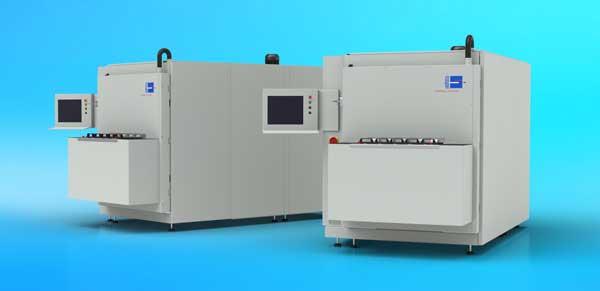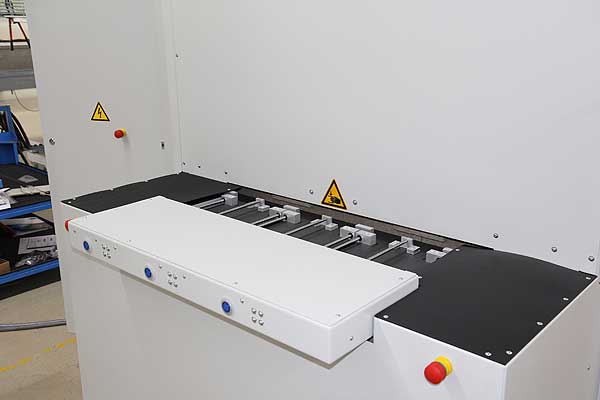Safe testing and measuring methods are thus becoming increasingly more relevant and have become standard today, in order to analyse the resistance of electronic components and increase their durability. Rehm offers two systems for such fields of application: The Securo Plus and the Securo Minus. By specifically heating up and/or cooling down the assembly, these systems ensure that they have the ideal temperature for the corresponding test and inspection procedures.
“A functional test under realistic conditions offers the maximum possible safety for our customers,” says Peter Schiele, Product Sales Rehm Thermal Systems. The Securo systems cover a temperature range of -50°C with the Securo Minus and +120°C with the Securo Plus.
To effectively cool down or heat up electronic components, air or nitrogen in the process chamber plays a key role: In the Securo Minus, the air is drawn in through a ventilator and blown to a heat exchanger driven by a refrigeration unit. Cooled in the heat exchanger, the air is then guided back to the process chamber. To allow it to circulate there ideally, and also to ensure it reaches all the assemblies in the process chamber, it is blown by a ventilator. In the process, guide plates guide it so precisely through the process chamber that an even distribution of temperature is guaranteed.
In the Securo Plus, in place of the heat exchanger, heating coils warm the air. Heating spirals in the process chamber also help to reach the desired heating gradient as quickly as possible.
In designing and implementing the required test tasks, however, Rehm Securo systems offer more than just flexibility and safety with regard to the temperature. To be able to fit perfectly into the different production landscapes, Rehm offers various integration concepts. “The Securo systems can be integrated into any production environment as an inline variant and as a batch system. Great importance is also attached to making provision for sufficient reception capacity. In this way, the temperature of large parts is also reliably controlled in short cycles at the required testing temperature,” explains Peter Schiele.
The Securo is of interest thanks in part to the goods carrier circulation according to the ‘meander’ principle: The goods carriers are loaded with the assemblies to be tested and move through the process chamber in close succession in arch-shaped loops. “This helps us make ideal use of the space available, which ensures maximum throughput. As a standard feature, the Securo has 30 of these goods carriers and five loading and unloading flaps. A total of 150 components can thus be loaded. Other test systems on the market have a drum inside which the components are moved. That is much less effective,” Peter Schiele confirms. If retrofitting is to be done to other forms of assemblies and geometries, the Securo offers the solution for this. A changeable carrier system makes this easily possible. Through this individually adjustable number of loading openings (bulkheads) of the Securo systems, the entire width of the system is utilised, which allows the throughput to be increased. Loading can be done both manually and automatically. To prevent ingress of ambient air and, in the case of the Securo Minus, possible icing in the loading area, the opening times coordinated with the handling system are set as short as possible. “Furthermore, during the entire process there is a slight overpressure in the chamber, which also reduces ingress of ambient air,” Peter Schiele explains.
The Securo systems offer maximum capacity utilisation and flexibility in the integration in production environments, and for medium-sized series the loading and unloading can also be done manually or, for large-scale series, by robot. Rehm systems that have been developed and designed based on decades of experience in thermal systems can thus now also be used in testing and inspection tasks.
Rehm Thermal Systems | www.rehm-group.com




